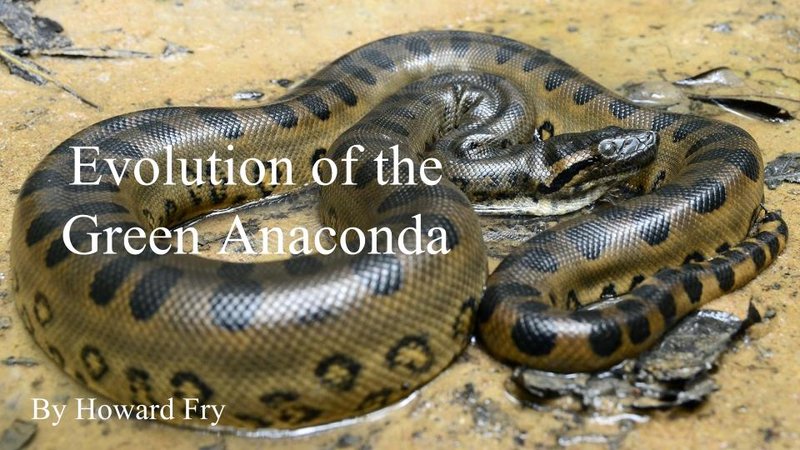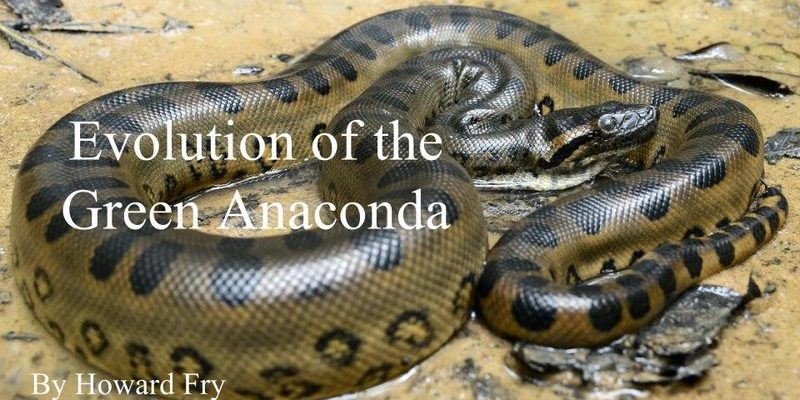
The Green Anaconda, or *Eunectes murinus*, is often found lounging in the warm waters of South America. While many people might picture an anaconda as merely a monster lurking in the shadows, there’s so much more beneath that surface. The evolution of this creature is a tale of survival and adaptation, reflecting the ever-changing environment that shaped its development over the ages.
Origins of the Green Anaconda
To understand the Green Anaconda, we need to go back in time. The story starts around 66 million years ago, during the Paleocene epoch. Interestingly, snakes, including the ancestors of the anaconda, diversified significantly after the extinction of the dinosaurs. Their evolution traces back to a group of reptiles known as lepidosaurs, which adapted to a wide variety of environments.
The early ancestors of modern snakes were smaller, and their body structure was quite different from what we see today. These first snakes didn’t have the exceptional size or strength that the Green Anaconda possesses. Instead, they were likely more similar to their lizard cousins, with limbs that eventually disappeared as they adapted to a life of slithering and constricting.
Over millions of years, these reptiles evolved in response to their environments. Some developed warning colors to ward off predators, while others, like the Green Anaconda, honed the art of stealth and size, learning to ambush prey in water-laden habitats. This evolutionary path led to the anaconda’s current status as one of the largest snakes in the world.
Physical Characteristics and Adaptations
Let’s dig a little deeper into what makes the Green Anaconda so special. Picture it: long, muscular, and often a staggering 20 feet or more in length! This size isn’t just for show; it plays a crucial role in their survival. The Green Anaconda has a stout, powerful body that allows it to constrict its prey efficiently.
The coloration of the Green Anaconda also tells a story. Its dark green skin, adorned with blotches and spots, provides excellent camouflage amid the murky waters and dense foliage of the Amazon basin. This helps it blend in with its surroundings, making it a stealthy predator.
In terms of adaptations, the anaconda’s ability to swim is noteworthy. Unlike many snakes that can glide through water but aren’t particularly good swimmers, the Green Anaconda thrives in aquatic environments. Its flattened tail propels it through rivers and swamps, enabling it to hunt fish, birds, and even large mammals like capybaras and deer. Here’s the thing: being at the top of the food chain means the anaconda has few natural predators, which is a significant advantage in the wild.
Habitat and Distribution
The Green Anaconda calls the wetlands of South America its home. It thrives in tropical regions, primarily in countries like Venezuela, Brazil, and Colombia. These lush environments, filled with rivers, swamps, and floodplains, offer the perfect habitat for this enigmatic snake.
Why are these habitats crucial for the Green Anaconda? They provide ample opportunities for hunting, breeding, and shelter. Anacondas prefer slow-moving waters, where they can lie in wait for their next meal. But they don’t just stick to the water; they spend time basking on riverbanks or hiding in dense vegetation.
During the rainy season, their habitats can expand, allowing them to roam and hunt across a broader area. In this ever-changing environment, the Green Anaconda demonstrates remarkable adaptability. The ability to thrive in varying conditions has helped it survive for millions of years, and it’s a testament to its evolutionary success.
Reproduction and Life Cycle
When it comes to reproduction, the Green Anaconda has some unique traits. Unlike many snakes that lay eggs, the anaconda is ovoviviparous, meaning it gives birth to live young. This method of reproduction allows the young snakes to be born in a more favorable environment, increasing their chances of survival.
The breeding season usually occurs during the rainy months, which is when conditions are ideal. Male anacondas will often engage in competitive mating rituals, intertwining their bodies to court the female. These mass mating balls can consist of several males trying to win over one female, an incredible display of natural selection.
After mating, the female carries the eggs inside her body until they hatch, usually giving birth to around 20 to 40 live young. These baby anacondas are independent from the get-go, ready to fend for themselves in the wild. As they grow, they will go through several shedding phases that allow them to increase in size, eventually becoming the formidable predators they’re known to be.
Conservation Status and Threats
Despite their impressive size and adaptability, the Green Anaconda faces several threats. Habitat loss due to deforestation and human encroachment poses a significant risk. As wetlands are drained for agriculture or urban development, the anaconda’s living spaces shrink, making it harder for them to find food and mates.
Additionally, poaching poses a problem. While they are not typically hunted for their meat, they are sometimes caught for the exotic pet trade. The demand for such unique pets can lead to illegal capture, further threatening their populations.
While the Green Anaconda is not currently considered endangered, it’s essential to keep an eye on their numbers. Conservation efforts that focus on protecting their habitats are crucial for their continued survival. Supporting these initiatives helps ensure that future generations can marvel at the majesty of the Green Anaconda in its natural habitat.
Final Thoughts
In the grand tapestry of evolution, the Green Anaconda holds a unique and fascinating place. From its historical origins millions of years ago to its impressive adaptations and survival strategies, this creature is a testament to the power of evolution.
The ability to thrive in a challenging environment showcases the resilience of life. As we continue to explore and understand more about these snakes, it’s vital to remember our role in protecting their habitats and ensuring their continued existence. After all, every creature, no matter how big or small, plays an essential part in the ecosystem. The story of the Green Anaconda is not just a tale of survival; it’s a reminder of the delicate balance in our natural world.

